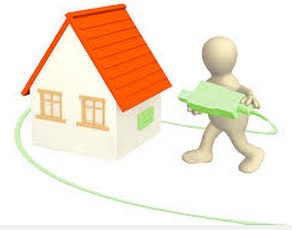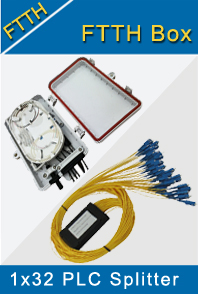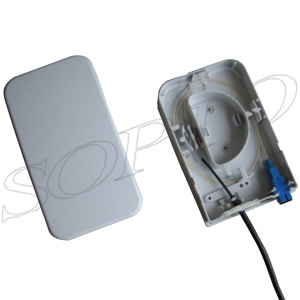-

- Sopto Home
-

- Special Topic
-

- FTTH Knowledge
-

- What is Known as Fiber to the X?
FTTH Knowledge
- Solving the FTTH Rollout Problem in Multiple Dwelling Units
- WDM PON Introduction FAQ
- A Simple Overview of Optical Power Meter
- ODN is based on PON FTTH Optical Cable Network of the Device
- Using an OTDR to be an Expert in Fiber Link Testing
- How FTTH Broadband Works?
- Connections among Fiber Terminal Boxes & Patch Cables & Pigtails
- Easy to Install a Fiber Terminal Box
- What is Arrayed Waveguide Grating?
SOPTO Special Topic
Certificate



Guarantee
Except products belongs to Bargain Shop section, all products are warranted by SOPTO only to purchasers for resale or for use in business or original equipment manufacturer, against defects in workmanship or materials under normal use (consumables, normal tear and wear excluded) for one year after date of purchase from SOPTO, unless otherwise stated...
Return Policies
Defective products will be accepted for exchange, at our discretion, within 14 days from receipt. Buyer might be requested to return the defective products to SOPTO for verification or authorized service location, as SOPTO designated, shipping costs prepaid. .....
Applications

Sopto supply the best FTTH solutions for your network!
SOPTO Products
- Fiber Optic Transceiver Module
- High Speed Cable
- Fiber Optical Cable
- Fiber Optical Patch Cords
- Splitter CWDM DWDM
- PON Solution
- FTTH Box ODF Closure
- PCI-E Network Card
- Network Cables
- Fiber Optical Adapter
- Fiber Optical Attenuator
- Fiber Media Converter
- PDH Multiplexers
- Protocol Converter
- Digital Video Multiplexer
- Fiber Optical Tools
- Compatible
Related Products
Performance Feature
FTTH Knowledge
Recommended

What is Known as Fiber to the X?
Fiber To The X (FTTx) is different from a traditional fiber optic network that would be used for a local area network (LAN) application. In most FTTX applications, only one optical fiber is used. That single optical fiber passes data in both directions. This is very different from a LAN application where the transmit optical fiber sends data in one direction and the receive optical fiber sends data in the other direction. In a LAN application, both optical fibers can have data passing through them at the same time.
In an FTTX single optical fiber application, full-duplex operation is typically not possible. Usually, only half-duplex operation takes place. This means that part of the time the optical fiber is carrying a signal in one direction, and the rest of the time, it is carrying a signal in the other direction.
.jpg)
FTTX architectures vary
FTTx systems typically use multiple wavelengths. The downstream laser is always a different wavelength than the upstream laser. The downstream is typically the longer wavelength, such as 1480nm or 1550nm (or both), and the upstream laser is typically 1310nm.
FTTX is possible with optical fiber distances up to 20km because optical fiber is capable of transmitting information with a very low level of loss. The typical loss for an FTTX optical fiber at 1550nm is 0.25dB/km and 0.35dB/km at 1310nm.
Fiber To the Home
A fiber-to-the-home (FTTH) PON uses optical fiber from the central office to the home. At the home, a converter box changes the optical signal from the optical fiber into electrical signals. The converter box interfaces with existing home cabling such as coaxial cabling for cable TV, twisted-pair cabling for telephone, and Category 5e or 6 cabling for Internet connectivity.

Fiber to the Building
A fiber-to-the-building (FTTB) PON is very similar to an FTTH PON. It uses optical fiber from the central office to the building and there are no electronics helping with transmission in between. The optical signal from optical fiber is converter into electrical signals in a converter box at the building. The converter box interfaces with existing cabling such as coaxial cabling for cable TV, twisted-pair cabling for telephone, and Category 5e or 6 cabling for Internet connectivity.
Fiber optic setups enable higher speeds of delivery and greater bandwidth than some other kinds of infrastructure. Some of the fiber networks deploying signals to the most sophisticated equipment can benefit from a multimode fiber connection, where a specific kind of fiber optic cable may be used for optimal speed.
Fiber to the Curb
"Fiber to the curb" (FTTC) refers to the installation and use of fiber optic cable directly to the curbs near homes or any business environment as a replacement for "plain old telephone service" (POTS). In a fiber-to-the-curb PON, optical fiber runs from the central office and stops at the curb. The "curb" may be right in front of the house or some distance down the block. The converter box is located where the optical fiber stops, and it changes the optical signal from the optical fiber into electrical signals. These electrical signals are usually brought into the home through the existing copper cabling. The electrical signal may need to be processed by another converter in interface with existing twisted pair cabling for phone, and cat 5e or 6 cabling for Internet connectivity.
Fiber to the Node
Fiber to the node (FTTN) is sometimes referred to as fiber to the neighborhood. A FTTN PON only has optical fiber from the central office to the node. The node is typically telecommunications cabinet that serves a neighborhood or section of a neighborhood. The optical signal from the optical fiber is converted into electrical signals inside the telecommunications cabinet. These electrical signals are distributed throughout the neighborhood through existing copper cables to the houses.
One of the main benefits of fiber to the node and similar systems is the ability to deliver data over more efficient fiber optic lines, rather than other lines with greater speed restrictions. The remaining area from the node to an individual destination, often called "last mile" service, can be achieved with copper or other types of wire. FTTN systems often use coaxial or twisted-pair cable in order to achieve delivery to multiple customers.
For more info, please browse our website or contact a Sopto representative by calling 86-755-36946668, or by sending an email to info@sopto.com.



